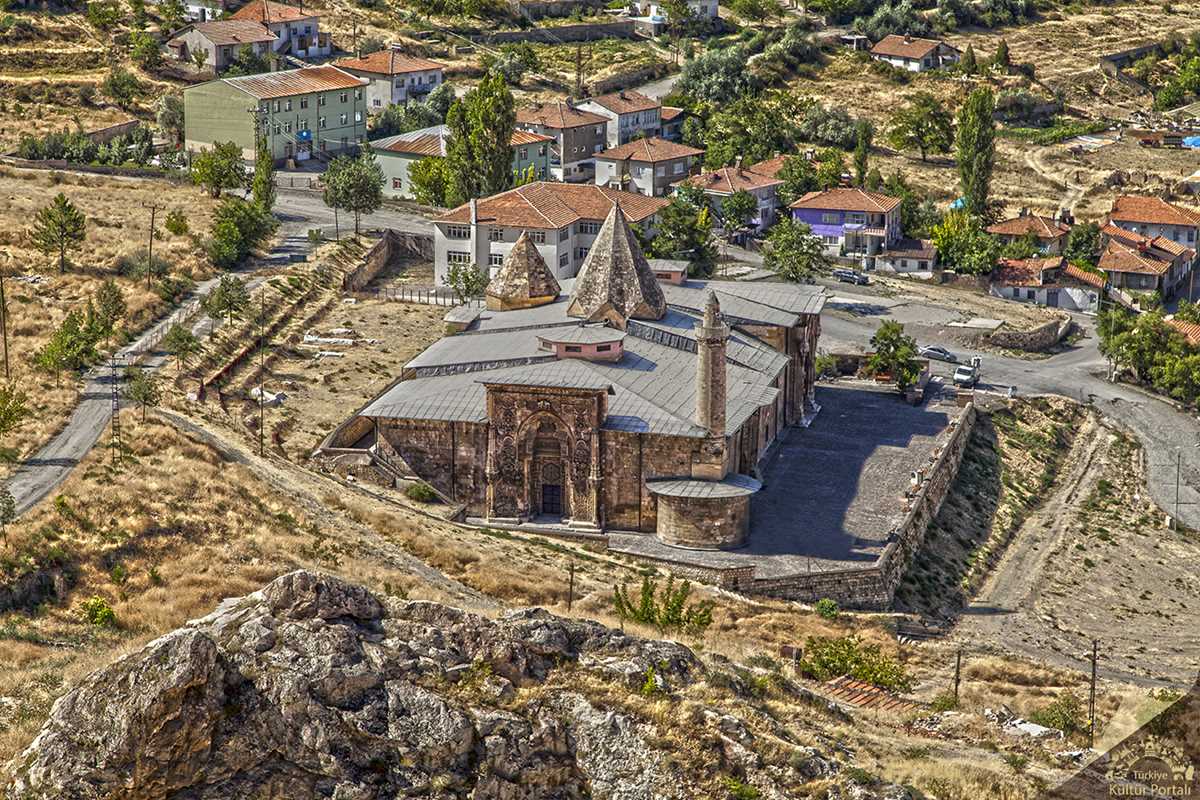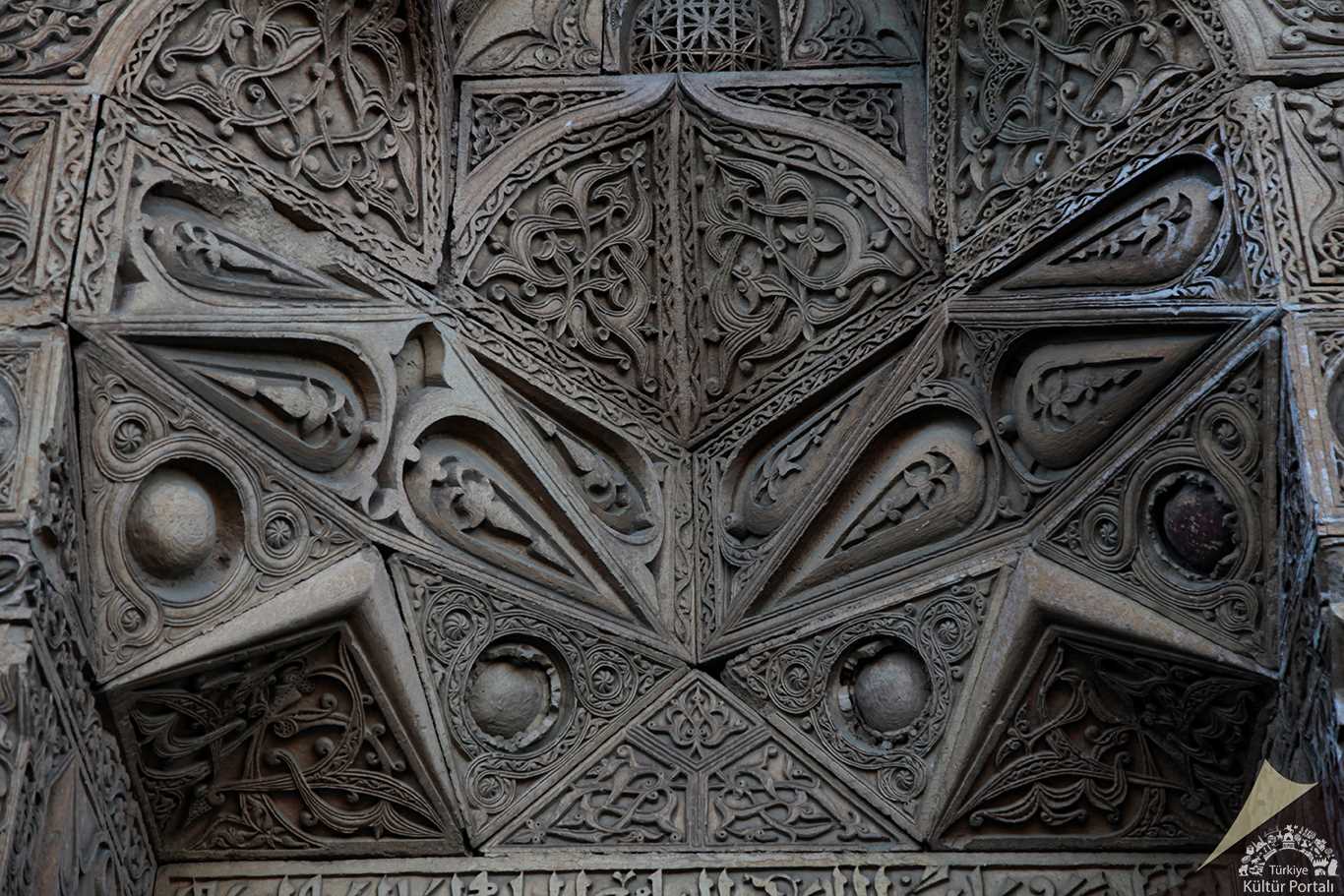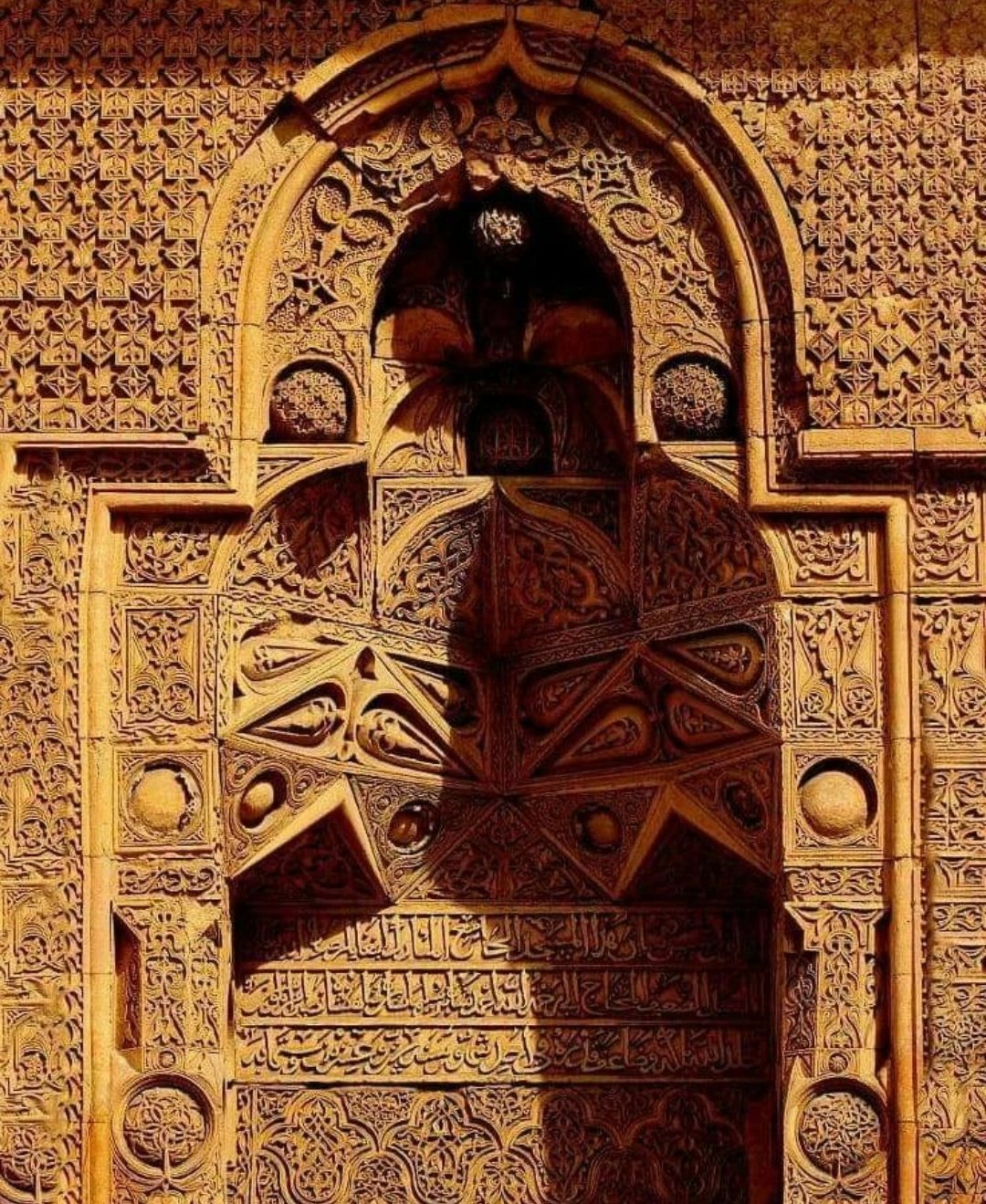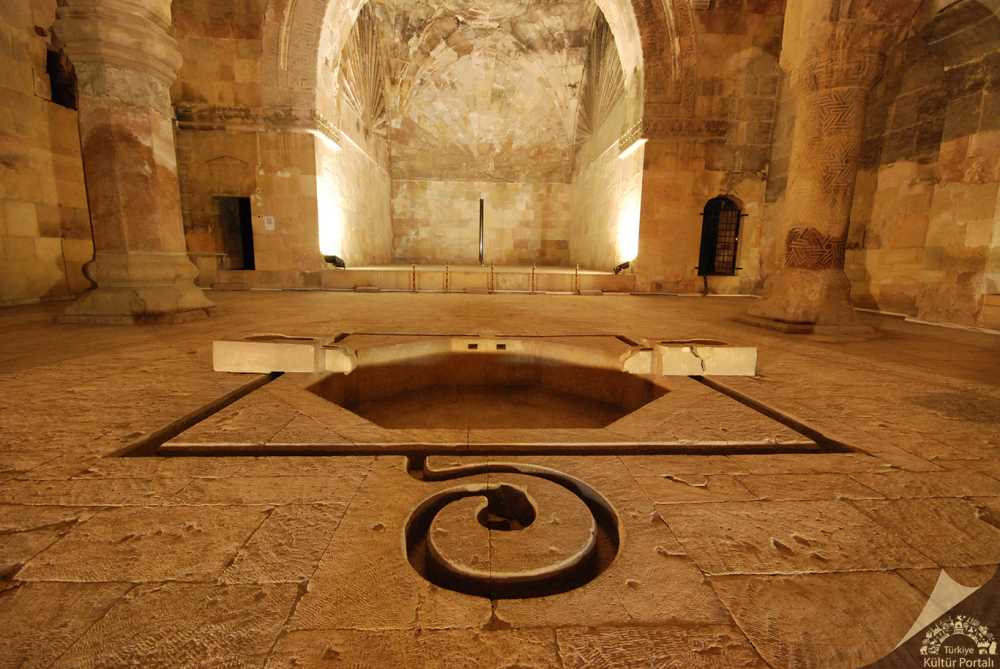Carved like a miracle into Anatolia’s spine, Divriği Ulu Mosque—Turkey’s first UNESCO-recognized monument (1985)—erupts with Seljuk genius in stone.
Table of Contents
Introduction to Divrigi Ulu Mosque

In the remote highlands of eastern Anatolia, far from the well-worn tourist paths of Istanbul, Cappadocia, or Ephesus, there lies a quiet town with one of Turkey’s most astonishing architectural secrets: Divriği. Tucked into the hills of Sivas Province, this small town is home to a monument so unusual, so technically advanced, and so breathtakingly beautiful that UNESCO called it a “unique artistic achievement.”
This is the story of the Divriği Ulu Mosque and Hospital — a unified architectural complex built in 1228 that combines a mosque, a hospital, and a pair of stone-carved gates unlike anything else in the Islamic world.

A Visionary Couple’s Gift to the World
The Divriği complex was commissioned by Emir Ahmed Shah, a ruler from the Mengücek dynasty, and his wife Melike Turan Melek, during the golden age of Seljuk influence in Anatolia. Rather than simply build a mosque, as many rulers of the period did, the couple envisioned something greater a structure that would combine faith and healing under one roof.
 On one side, a congregational mosque where the townspeople could gather for Friday prayer. On the other, a hospital, or darüşşifa, where the sick, injured, and mentally ill could receive care — not just through medicine, but through architecture, sound, water, and warmth. In a time when much of the world still viewed illness with fear or superstition, this project embodied humanism and innovation centuries ahead of its time.
On one side, a congregational mosque where the townspeople could gather for Friday prayer. On the other, a hospital, or darüşşifa, where the sick, injured, and mentally ill could receive care — not just through medicine, but through architecture, sound, water, and warmth. In a time when much of the world still viewed illness with fear or superstition, this project embodied humanism and innovation centuries ahead of its time.

A Masterpiece in Stone
From the outside, the building appears fortress-like a massive rectangular form built from pale yellow stone. But as you draw near, the walls begin to speak.
There are four portals two for the mosque, one for the hospital, and a small private entrance for the ruler. These aren’t just doorways. They are some of the most detailed stone carvings in existence.
Each gate is covered in high-relief ornamentation: stars, rosettes, vines, calligraphy, spirals, and medallions. No two patterns repeat. Scholars estimate there are thousands of unique elements across the structure. The level of intricacy is dizzying. The shadows cast by the carvings shift constantly through the day, giving each gate a kind of living presence.

The north portal of the mosque is often called the Gate of Paradise. It’s the largest and most flamboyant, with overlapping vines and circular motifs that look like they’re growing right out of the stone.

The west portal, nicknamed the Textile Gate, features dense geometric motifs woven like fabric. From a distance, it appears soft.

The hospital gate, or Crown Gate, is celestial in theme: carved suns, moons, and stars speak to a cosmic sense of healing.

Locals call it a miracle mosque. And not just for the carvings. At certain times of year, the shadows cast by the western portal form the shape of a man in prayer. At others, the north gate’s carvings create the silhouette of a veiled woman reading scripture. Whether a masterful trick of geometry or a happy accident, these light effects add to the structure’s mystique and spiritual resonance.

Inside: Stillness and Structure
The interior of the mosque is starkly different from the gates. Where the exterior is energetic and expressive, the inside is contemplative and calm. Massive stone columns divide the prayer hall into aisles. Above them, an extraordinary system of vaults and domes shelters worshippers from the harsh Anatolian winters.
One dome sits above the mihrab, the prayer niche; another rises above a central fountain. Light filters in gently, and the acoustics are surprisingly soft. There is no echo, no clamor — just a feeling of weight and stillness. A sense that the building is listening.

The Hospital: A Sanctuary of Sound and Warmth
The adjoining darüşşifa, or hospital, is as innovative as it is compassionate. Its design centers around a domed courtyard, open to the sky through an oculus, and lined with iwans (vaulted halls) and rooms for treatment. In the center lies a stone basin, where water once trickled continuously not just for cleaning, but for therapy.
Seljuk physicians treated mental health with music and sound. In Divriği, the dome’s acoustic design allowed Quranic recitation or ney (reed flute) melodies to float gently through the space, calming patients’ minds.

And perhaps most remarkable of all especially for the 13th century is that Divriği had an underfloor heating system.
Hot air from a furnace was channeled through a series of narrow spaces beneath the floors of both mosque and hospital. This early hypocaust system made the structure warm and comfortable in the brutal Sivas winters. It wasn’t just a marvel of comfort it was a deliberate act of care. Warmth was part of the healing.

A UNESCO Treasure in Isolation
In 1985, UNESCO inscribed the Divriği Great Mosque and Hospital on its World Heritage List not just for its age or function, but because “there is nothing else like it in the world.” The site meets multiple criteria: artistic genius, architectural innovation, cultural synthesis, and spiritual value.
But even with that recognition, Divriği remains relatively unknown to international travelers. This is in part due to geography the town is a few hours from Sivas, and far from major tourist hubs. Yet this isolation has preserved its magic. Visit today, and you’ll often find yourself nearly alone with the building.
And that’s a gift.
To stand before those portals, to hear your footsteps echo beneath the dome, to feel warm air rising beneath ancient stone it’s not just a visit. It’s an experience. A conversation across centuries.

Get in Touch with Us
We don’t do cookie-cutter travel. At The Other Tour, we specialize in immersive journeys that connect you with the soul of Türkiye places that reveal the country’s depth, mystery, and living heritage.
If you’re looking for a destination that speaks to the mind and heart, Divriği is waiting for you.
Let us take you beyond the brochure, through the Gates of Paradise, and into the stone-carved miracle of Divriği.
It’s not on the beaten path.
But we promise it’ll stay with you forever.







